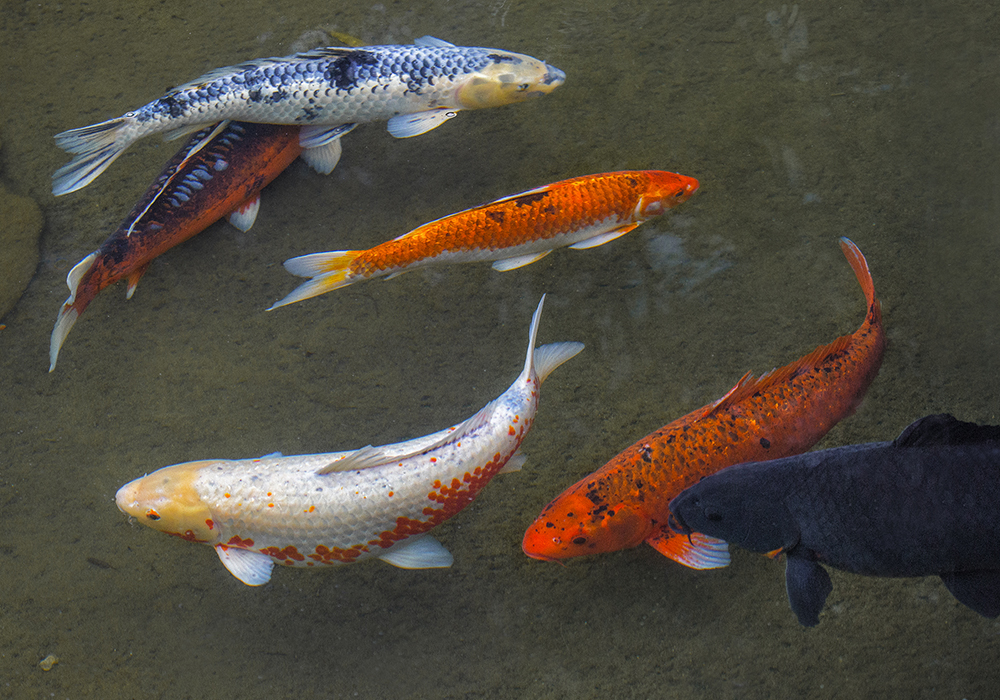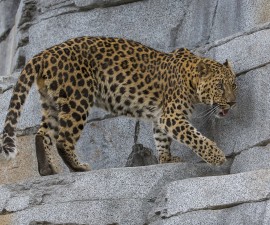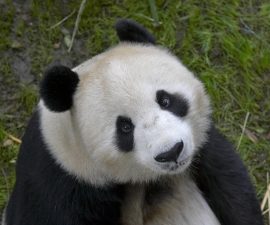BY Karyl Carmignani
Photography by Ken Bohn
Ducking into the Terrace Lagoon is a tranquil detour off Front Street at the Zoo. Even as the rumbling of tour bus engines and a cheery driver’s greeting floats across the way, it is a calming, bamboo-fringed respite. A murmuring waterfall tumbles into a curving, feng shui pond lined with manicured foliage and grasses. A graceful walkway arc provides a bird’s-eye view of the pond, complete with a Japanese-style tōrō (stone lantern). All this converges to make this a soothing setting for the shimmering, colorful resident koi fish—and for visitors as well.
“Carp” a Diem
Koi resemble over-sized goldfish, and, in fact, koi and goldfish are both types of carp. However, they are from two different carp groups. Koi history goes back millions of years: carp fossils discovered in South China are thought to be 20 million years old. The fish were featured in ancient Chinese artwork and carvings, and some Chinese rulers kept koi in pools for their viewing enjoyment. Natural mutations of color on the fish’s mostly brown scales occurred like patchwork early on, but it was the Japanese who developed ways to manipulate the blotches of color through breeding to create “living jewels,” or nishikigoi.
Initially, Japanese rice farmers in Niigata kept the fish as a food source to feed their families through the winter. Soon, though, koi were showing bursts of color on their scales, so people built separate ponds for the fancy-colored fish and kept them as pets. By the 1820s, the fish were bred for their varied aesthetic appeal. As their artful appearance grew, so did interest in keeping koi. In 1914, Emperor Hirohito was given koi to keep in the moat of the palace, which was a huge boon for the sparkling fish’s popularity. That same year, koi were also featured at an annual exposition in Tokyo, which further enhanced their appeal. Bred for coloration, pattern, and scalation, ornamental koi Cyprinus carpio have become the epitome “decoration” for outdoor ponds and water gardens.
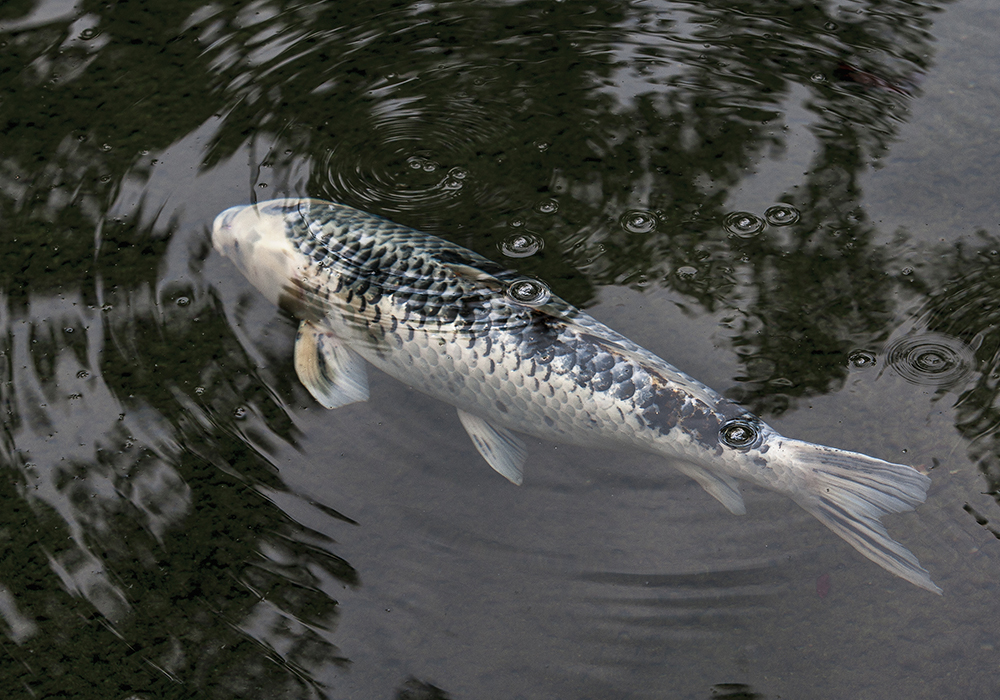
THE ZEN OF KOI
Koi ponds are an elegant component of public and private gardens.
Keep Koi and Carry On
With its easygoing nature and energetic life force, people have long sought the characteristics associated with koi: good fortune, success, prosperity, longevity, courage, ambition, happiness, and perseverance. Much of the koi’s symbolism arises from the Chinese legend of the Dragon Gate, in which the determined koi swam upstream, conquering waterfalls and other obstacles to reach the Dragon Gate, where the fish are transformed into a dragon, a positive force in Chinese culture. Koi are also tied to the yin yang symbol, with the black and white shapes representing a male and female koi, each completing the other and creating peace and harmony. Koi are even considered a good luck sign for a happy marriage.
Thousands of people keep koi in outdoor ponds or large aquariums, which is thought to draw the positive energy and beauty of these creatures into the home. Koi require meticulously clean and well-filtered water, a healthy diet, and plenty of room to grow, swim, and koi-ly “chat” with other fish. They can reach 2 to 3 feet in length and weigh up to 35 pounds. Healthy koi can live for 50 to 75 years, although some experts insist they have lived for nearly 200 years. That’s quite a fish story!
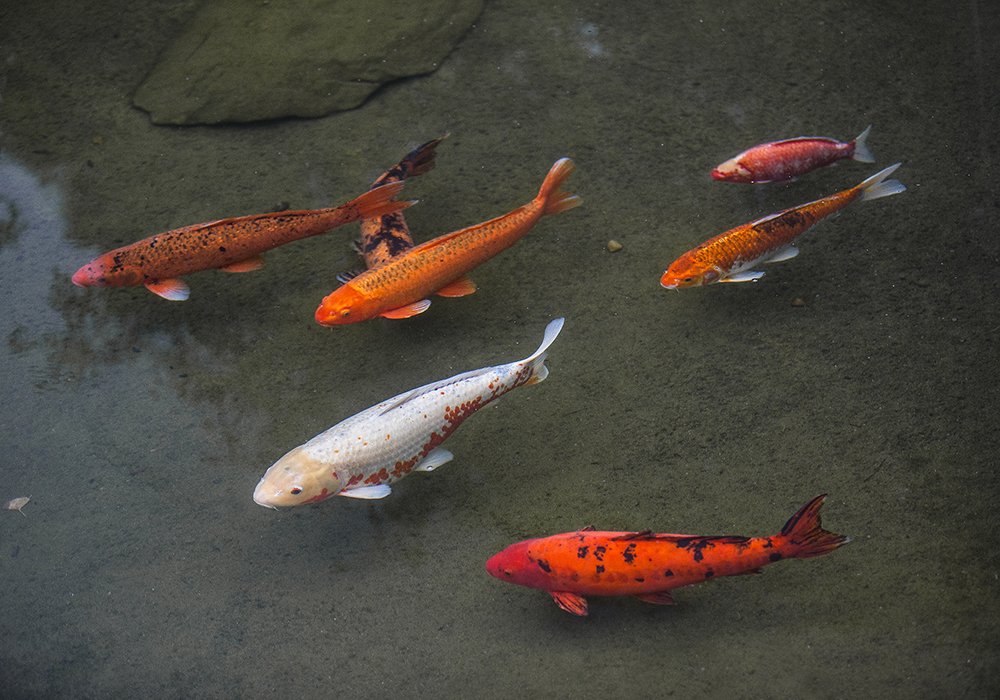
SEEING CLEARLY
Keeping the water clean is critical for healthy and happy koi!
Koi Not Coins
Ten koi at the Zoo’s Terrace Lagoon glide around their 18,500-gallon pond, with tiny mosquito fish and a bluegill or two for company. The pond has been around for decades, initially serving as a bird pool. In the late 1990s, a filtration system was added to support the koi. The system operates 24/7, and the water is disinfected with ozone gas to remove contaminants (chlorine is not compatible with fish). The pond is vacuumed once a week.
It’s a collaborative effort to maintain the area, as our Water Quality Department keeps the water and pond clean, horticulture staff maintains the greenery, and reptile keepers take care of the fish. “We get the fun part of the koi pond—we just feed them!” said Brandon Scott, senior keeper. With a bowl of koi pellets and a handful of tiny vein-like blood worms (for extra protein), we stood on the bridge as the fish gathered, lips puckered for their meal, while ducks dashed through the floating sprinkles, grabbing what they could. Signs ask visitors to refrain from tossing coins into the pond, as the animals can accidentally ingest them, causing great harm. Unfortunately, the “wishing well complex” persists, and coins are carelessly tossed into the pond at great peril to the fish.
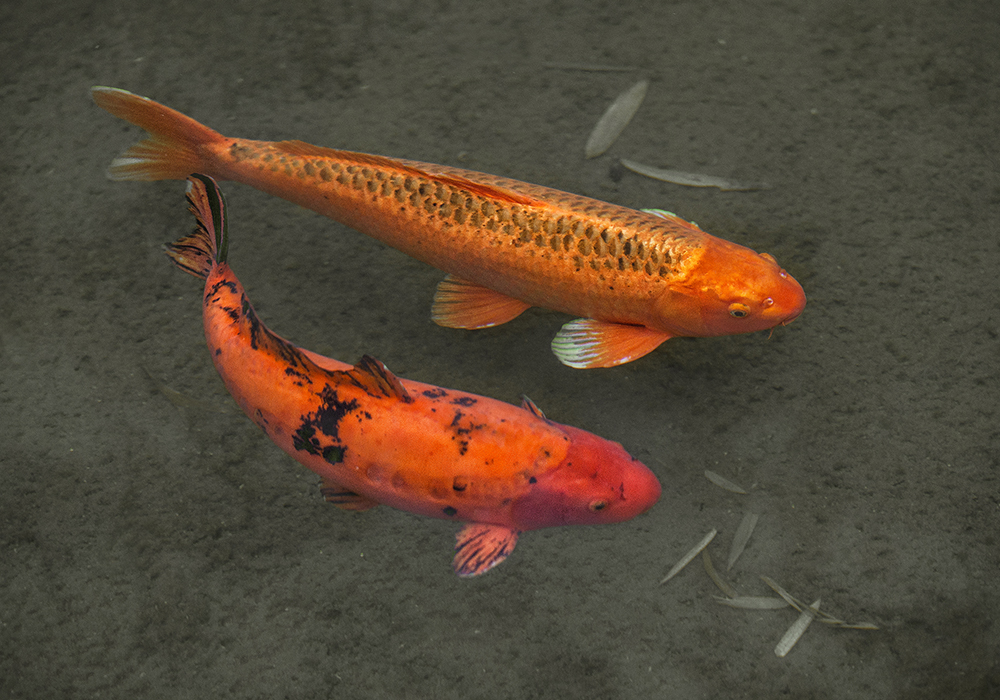
PAINTERLY PATTERNS
Koi are bred for coloration, pattern, and scalation. Orenji ogon is a deep metallic orange koi; there are many variations of koi coloration.
Koi Care
Despite a balanced diet and living in pristine water, koi can sometimes develop tumors. When this occurs at the Zoo, the fish patient is caught up in a net, placed in a secure container, and transported to the Zoo’s Jennings Center for Zoological Medicine. Here’s where things get interesting! Anesthesia (sodium bicarbonate-buffered MS-222) is pumped over the koi’s gills, allowing veterinarians to painlessly conduct a complete diagnostic workup along with any other necessary medical procedures. Once completed, the anesthesia is gradually diluted until the koi wakes up. The fish patient is usually returned to its Terrace Lagoon home within 24 hours. The health and welfare of all of our animals is of vital importance—and there’s nothing fishy about that!
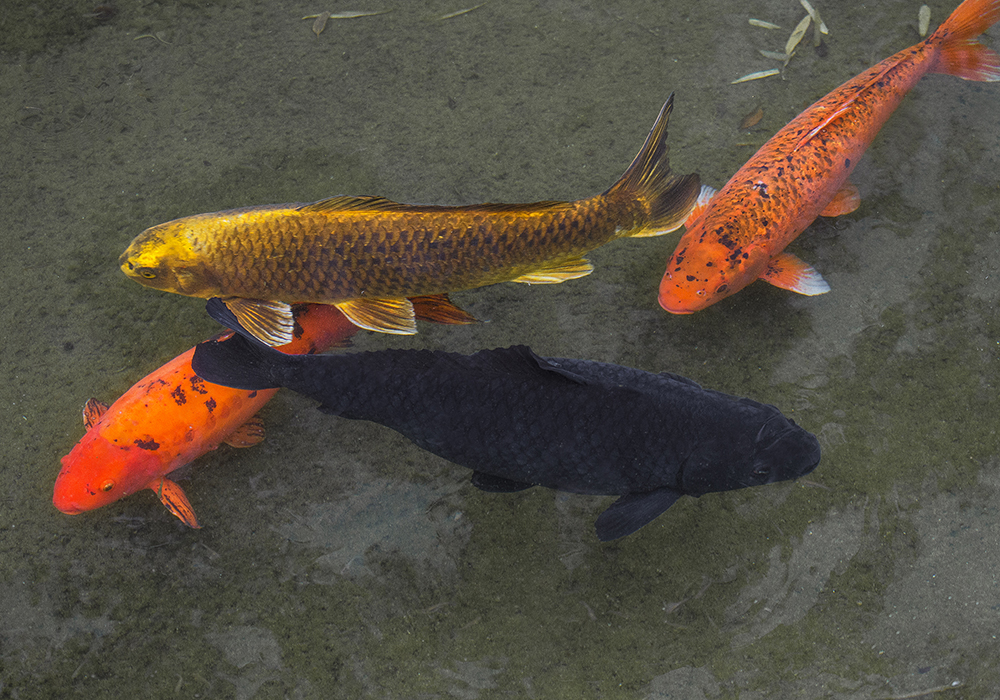
KOI OF MANY COLORS
There are about 100 types of koi today, each bred and crossed for a desired color and pattern.
Cool Koi Colors
According to a popular feng shui website, the Japanese name and symbolism behind the different koi include:
KOHAKU: white body with red spots (symbolizes career success)
KUMONRYU: thought to be the most unique type of koi, either solid black or white body with black spots; its pattern changes as the koi grows (symbolizes life changes and transformations)
OGON: silver-colored body (symbolizes success in business, wealth)
KUCHIBENI: white-and-red patterned fish, often referred to as the lipstick koi, since the red color around its mouth resembles puckered lips (symbolizes love and long-lasting relationships)
YAMBUKI: gold-colored body; this is a popular restaurant name (symbolizes riches and wealth)

